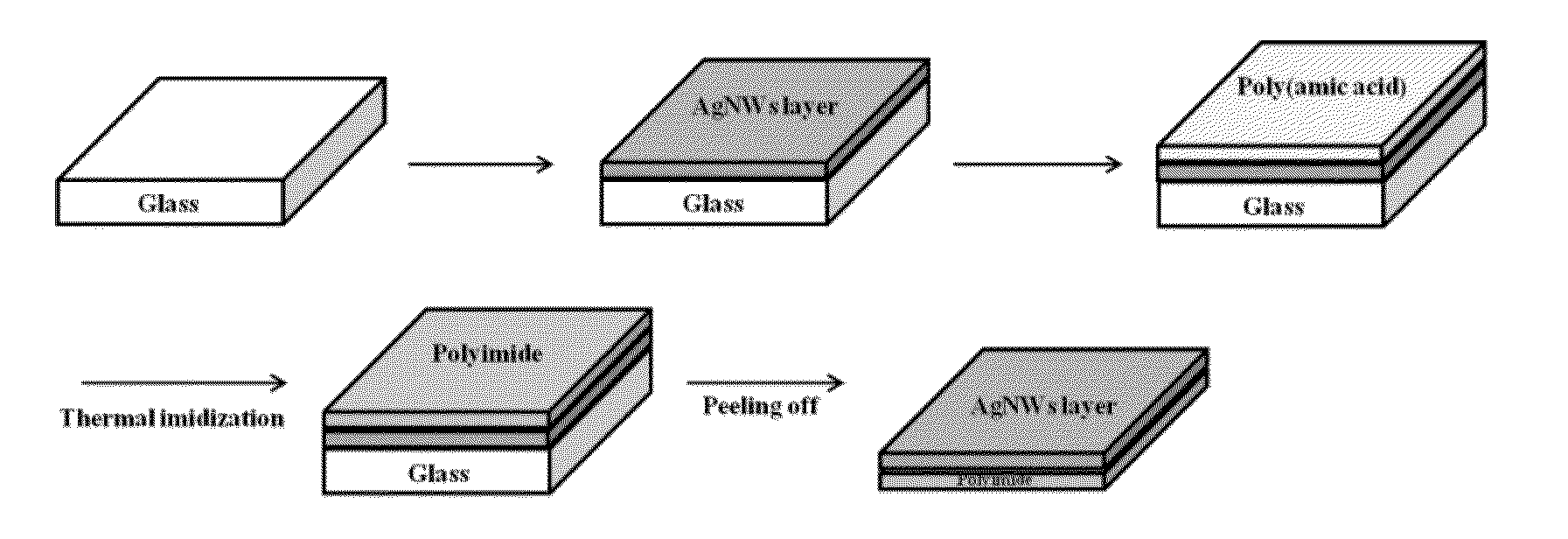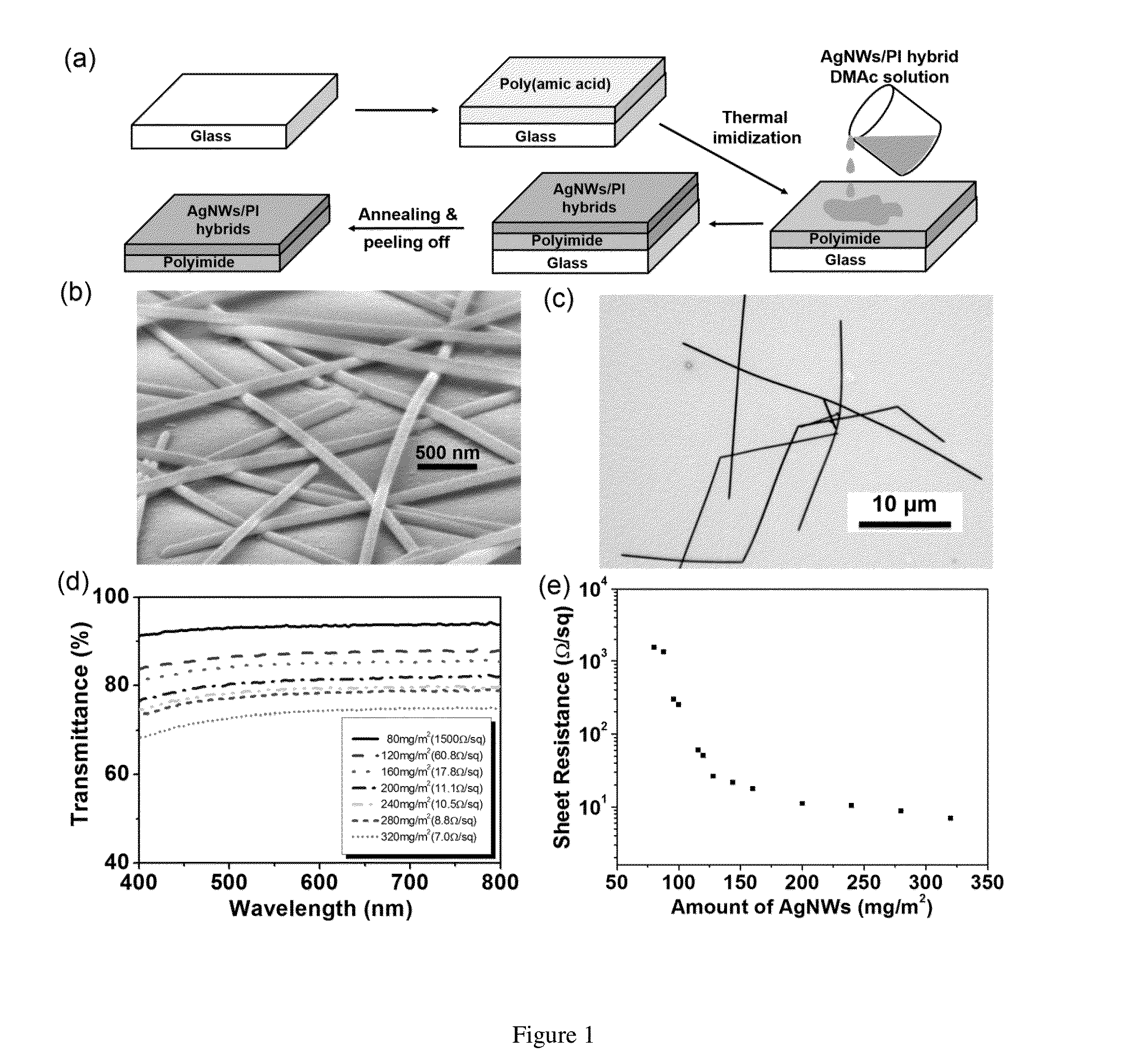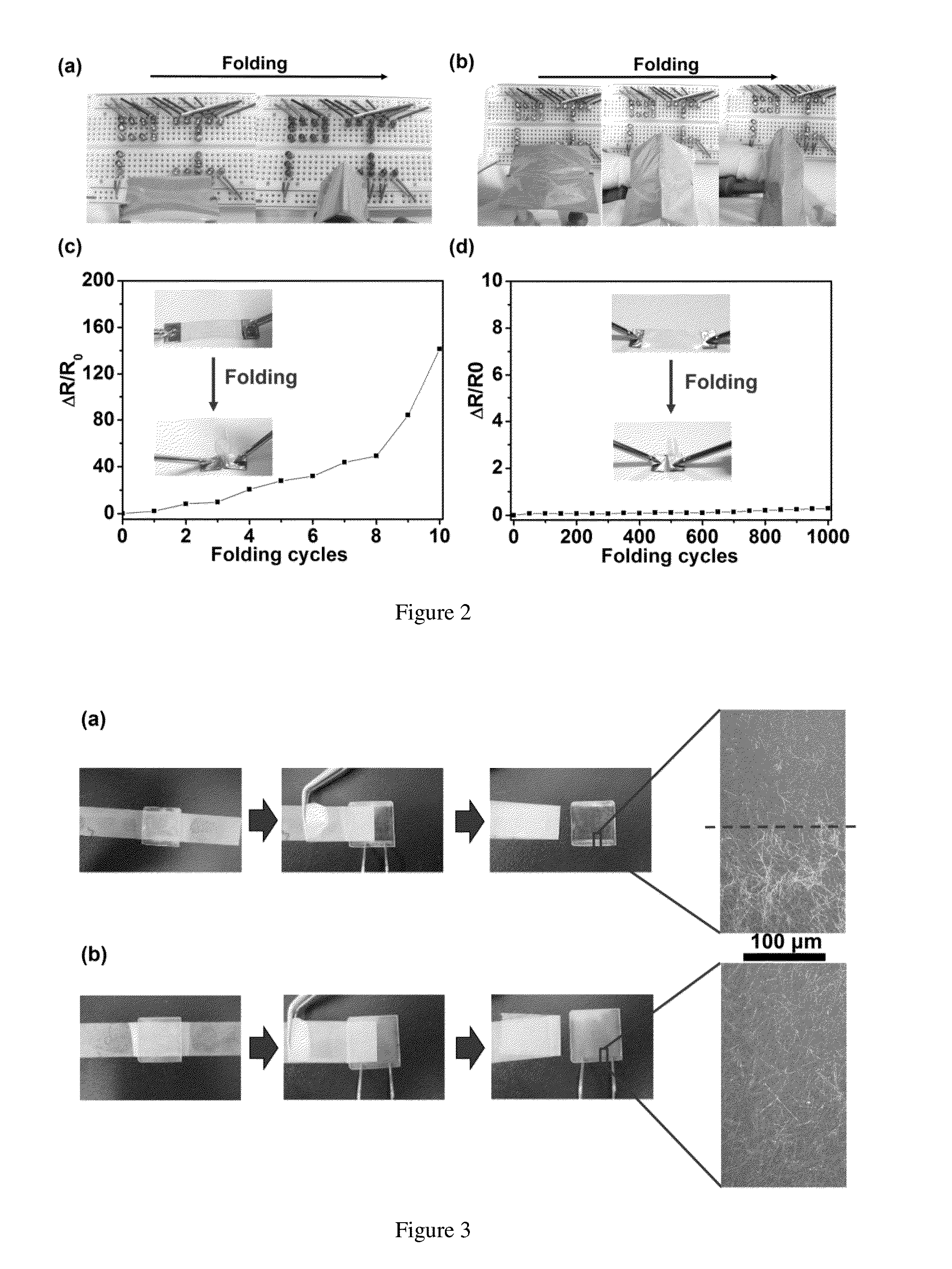Flexible and transparent electrode and manufacturing method thereof
a flexible and transparent electrode technology, applied in the direction of printed circuit manufacturing, printed circuit aspects, other domestic articles, etc., can solve the problems of poor adhesion property between substrates, low thermal stability, pale blue color, etc., and achieve excellent thermal stability, high glass transition temperature (tg), and high potential to operate.
- Summary
- Abstract
- Description
- Claims
- Application Information
AI Technical Summary
Benefits of technology
Problems solved by technology
Method used
Image
Examples
prepared example 1
Transparent and Colorless Organo-Soluble PI (Binder)-6FCHPI
[0056]The synthesis of transparent PI 6FCHPI was polymerized by chemical imidization, as shown in the following equation (I). 0.2442 g (1 mmol) of 1,2,4,5-cyclohexane tetracarboxylic dianhydride was added in one portion (30 wt % solid content) into the solution of 0.3343 g (1 mmol) of diamine 4,4′-(hexafluoroisopropylidene)dianiline in 1.4 mL of DMAc at room temperature under nitrogen flow. The mixture was kept stirring at room temperature for about 3 days. The imidization agents, pyridine 0.4 mL and acetic anhydride 0.95 mL were added into the reactor. The imidization process was also done at room temperature for 24 h. The resulting polymer solution was poured into 200 mL of methanol giving a white precipitate and collected by filtration.
prepared example 2
Transparent and Colorless Organo-Insoluble PI (Substrate)-8:2 Copolymer
[0057]Organo-insoluble colorless PI 8:2 copolymer was prepared by the commercial available diamines trans-1,4-cyclohexanediamine and 2,2′ -bis(trifluoromethyl)benzidine which the molar ratio was 8:2 with 4,4′-biphthalic anhydride via thermal imidization, as shown in the following equation (II).
[0058]Test of Solubility Behavior of Colorless PIs
[0059]The solubility properties of PIs and 6FCHPI were investigated qualitatively. Hexafluoroisopropylidene group in the 6FCHPI is used to increase the free volume of the PI; thereby solubility can be improved. Results are summarized in table as follows.
Solubility Behavior of Colorless Polyimidesam-NMPDMAcDMFDMSOCresolTHFCHCl36FCHPI++++++++++++−8:2−−−−−−−Copolymera++, soluble at room temperature; +, soluble on heating; + −, partially soluble or swelling; −, insoluble even on heating.
[0060]Thermal properties of colorless PIs
[0061]The organo-soluble PI (binder) was prepared by...
example 1
Preparing the Flexible Transparent Electrode of the Present Invention by a Coating Process
[0066]Example 1 is described below with reference to FIG. 1.
[0067]FIG. 1(a) shows a procedure to prepare a flexible transparent electrode by a coating process. The colorless organo-soluble PI prepared in preparation example 1 is introduced into a DMAc solution containing AgNWs. Then, the solution is drop-coated onto the colorless organo-insoluble PI substrate prepared in preparation example 2 and the random networks of AgNWs are formed on a piece of base material (i.e., glass) which has been treated with poly-L-lysine beforehand. After that, annealing is conducted to lower the electrical resistance of the silver nanowire / PI electrode. Lastly, the electrode is peeled off from the base material to form the flexible transparent electrode in the present example.
[0068]The AgNWs were prepared by modified polyol process that used EG as reductant and solvent, PVP as capping agent, silver nitrate as pro...
PUM
| Property | Measurement | Unit |
|---|---|---|
| Temperature | aaaaa | aaaaa |
| Temperature | aaaaa | aaaaa |
| Electrical resistance | aaaaa | aaaaa |
Abstract
Description
Claims
Application Information
 Login to View More
Login to View More - R&D
- Intellectual Property
- Life Sciences
- Materials
- Tech Scout
- Unparalleled Data Quality
- Higher Quality Content
- 60% Fewer Hallucinations
Browse by: Latest US Patents, China's latest patents, Technical Efficacy Thesaurus, Application Domain, Technology Topic, Popular Technical Reports.
© 2025 PatSnap. All rights reserved.Legal|Privacy policy|Modern Slavery Act Transparency Statement|Sitemap|About US| Contact US: help@patsnap.com



